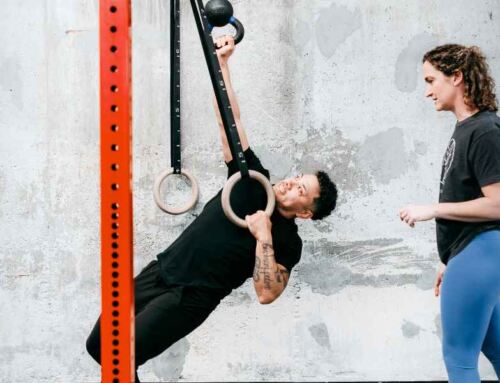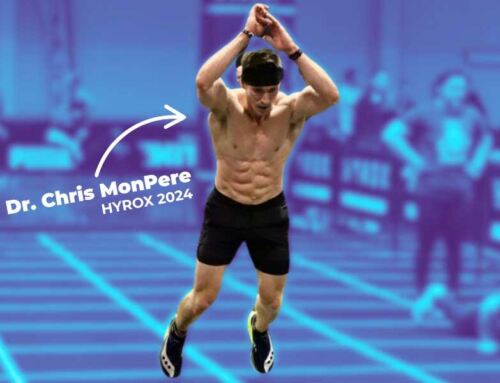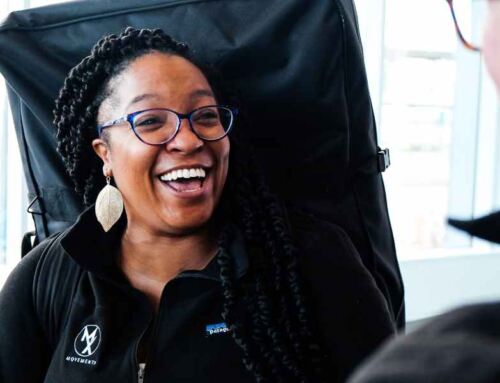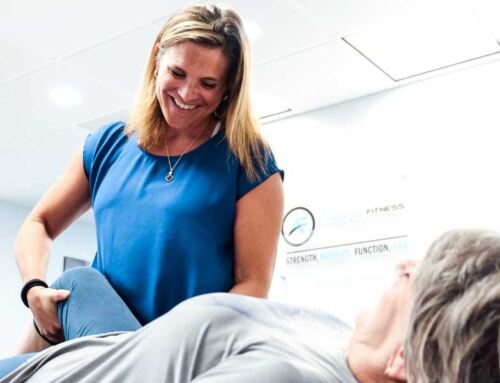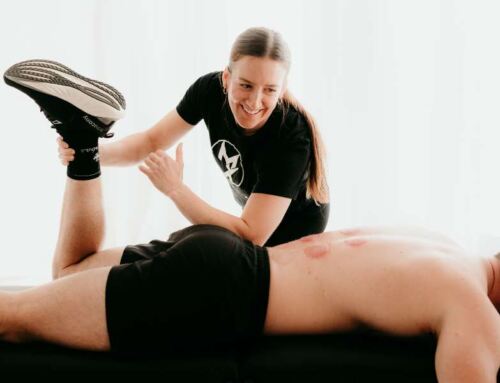DEXA – The Body Mass Report Card
Report card time! That time of year when students of all ages sweat the results of 6 weeks of hard work (hopefully) and the implications that it has on their admission to [insert Ivy league school here]!
On a similar front, we go to our primary care physician each year for our general health report card. This report card includes a battery of health metrics (such as body weight, blood pressure, and a blood panel), to provide insight into our potential to live long enough to see our grandchildren graduating from that same Ivy league school.
Can we use a more discerning test as part of our health report card than body weight alone? Yes!
What is DEXA?
Dual Energy X-Ray Absorptiometry is a low radiation scan that uses two x-rays to scan your entire body. The two rays are absorbed differently by bones and soft tissues in the body, and it further differentiates soft tissue mass into lean mass and fat mass.
How is DEXA different from Standard X-Ray?
Major differences [1]:
- Standard x-ray is used to produce a high-quality picture of the bone and targets a focal area of the body (IE: the hip). DEXA is used to measure bone density of bone and scans the entire body.
- DEXA provides information on soft tissue mass.
Is it Safe?
The amount of radiation in a DEXA is very low, about 10 percent of the radiation one would be exposed to from a normal chest X-ray [6].
Why DEXA?
DEXA is traditionally used by physicians to aid in the diagnosis of osteopenia (low bone density) and osteoporosis (disease state of decreased bone density) through assessing the bone density of the hips and the lumbar spine and comparing these numbers to healthy adults aged 20-29 [2].
The implications of osteopenia and osteoporosis are beyond the scope of this article.
DEXA can also be used as a “body composition report card” in the absence of disease and it is more informative than body weight, alone. When you weigh yourself, the number on the scale tells you nothing about the breakdown of body weight into its components or their percentage of total body weight. DEXA is able to break down body weight into the following:
1. Bone Mineral Density (BMD)
While the medical utility is to provide a disease referenced score for the hips and lumbar spine, DEXA can also provide insight into the bone mineral density of the entire body. It can give you information about the weight and density of different bony regions of your body (head, right and left arm, right and left leg, right and left sides of trunk), which informs your risk for incidents we want to avoid, like a hip fracture.
2. Lean Mass
A distinct benefit of DEXA is its ability to estimate lean mass for the arms, trunk, and legs [3]. The scan can further break down these segments to provide side-to-side comparison within the body. Research is shedding more light on the importance of lean muscle mass as we age, and its connection to longevity [8].
3. Adipose Tissue (Fat) Mass
Another benefit of DEXA is its ability to estimate fat mass in the body. It provides a breakdown of fat mass (and body fat percentage) of the arms, legs, trunk, waist, and hips. If you are trying to lose weight, a loss of fat mass without compromising lean mass, is the ultimate goal!
4. Visceral Adipose Tissue (VAT)
This is a subset of adipose tissue that is specific to the trunk. This region is of particular importance because excess VAT is associated with medical disorders such as metabolic syndrome, cardiovascular disease and several cancers [4].
When to Get a DEXA?
The National Osteoporosis Foundation recommends DEXA scans every two years for women over the age of 65 and men over 70 to screen for osteopenia and osteoporosis [5].
Knowing that we see age-related changes in muscle mass starting in our thirties [7], it may be advisable to start getting annual DEXA as part of your body composition report card in your thirties.
At MovementX, we have established a partnership with our friends over at Bodymass in Arlington, VA, to help ensure our patients have easy and inexpensive access to DEXA scans whenever they desire. Patients and clients of MovementX have access to exclusive discounts and can work directly with their provider to coordinate the scan and further discuss their results.
Real World Case
A 30-year-old male who lost two years of his ideal training program (long distance running and obstacle races) due to hip and back pain, ultimately pursued surgical intervention on his hips. After successful completion of his surgical [2] rehabilitation, he wanted to start a balanced strength/endurance program that would focus on improving movement quality (first) and building towards participation in obstacle races.
He got a DEXA upon initiating his program to establish baseline measurements for weight, bone density, lean mass, and fat mass.
- Weight: 172.5 lb
- Bone Density (Overall): 99th percentile
- Lean Mass: 134.8 lb
- Fat Mass: 32.9 lb
- Visceral Adipose Tissue: .43 lb
After receiving his results, he set body composition goals (increase lean mass, reduce fat mass) to support his movement goals. Body composition goals are best achieved by addressing any limitations in sleep, nutrition, activity, and psychological well-being (S.N.A.P.) and it was decided that nutrition and activity would be the areas of focus in this case.
Nutritional Intervention: Using the fat mass numbers from the DEXA and blood panel numbers from a recent annual physical we decided on a short-term plan of food tracking (using an app) to better understand eating habits and focused on increasing his protein intake (to support his body composition goals and training routine).
Specifics of nutritional interventions are beyond the scope of this article.
Activity: To address movement quality goals, we focused on movement breaks during the workday to “practice” squatting, lunging, hinging. This was coupled with a 3 x weekly strength routine (total body) and 2 x weekly high intensity interval training to address body composition and obstacle racing goals.
Specifics of activity interventions are beyond the scope of this article.
He decided to re-scan after 6 months of intervention:
- Weight: 172.6 lb
- Bone Density (overall): 99th percentile
- Lean Mass: 137.7 lb
- Fat Mass: 27.3 lb
- Visceral Adipose Tissue: .34 lb
Meaning, he had a net change of:
- Weight: -2.6 lb
- Bone Density (overall): No change
- Lean Mass: +2.9 lb
- Fat Mass: -5.6 lb
- Visceral Adipose Tissue: -0.9 lb
The DEXA served as a report card for 6 months of nutrition and activity-specific interventions and provided detailed feedback on the impact of his routine. Onwards!
Conclusion
Put simply: DEXA = report card of your body mass health.
Thinking bigger picture: DEXA + annual physical = total body wellness report card.
Disclaimer – the information provided is for educational purposes only and does not substitute for professional medical advice. Users should consult their medical provider for specific advice and/or treatment. The author and company are not liable for risks or issues associated with using or acting upon the information in this article.
References
- https://www.dexalytics.com/news/standard-x-ray-vs-dual-x-ray-absorptiometry-dxa/
- https://www.osteoporosis.foundation/
- Schoenfeld B. Science and development of muscle hypertrophy 2nd edition. Champaign, IL: Human Kinetics (2021).
- Schuster A, et al. The clinical importance of visceral adiposity: a critical review of methods for visceral adipose tissue analysis. Br J Radiol. 2012 Jan; 85(1009): 1–10
- https://www.bonehealthandosteoporosis.org/news/what-to-expect-when-getting-a-dexa-scan/
- https://radiology.ucsf.edu/patient-care/services/bone-density-scan-dxa-dexa
- https://my.clevelandclinic.org/health/diseases/23167-sarcopenia
- Cheung CL, et al. Systematic review and meta-analysis of lean mass and mortality: Rationale and study description. Osteoporos Sarcopenia. 2021 Mar; 7(Suppl 1): S3–S12.
About the Author
Dr. Dan Alcorn is a physical therapist with MovementX in Northern Virginia. He is a Board-Certified Specialist in Orthopedic Physical Therapy and is also fellowship-trained in the care for upper extremity athletes. Dan Alcorn treats patients at Patriot CrossFit in Arlington, VA, and has a strong passion for improving people’s confidence through healthier movement, lifestyle choices, and longevity.



